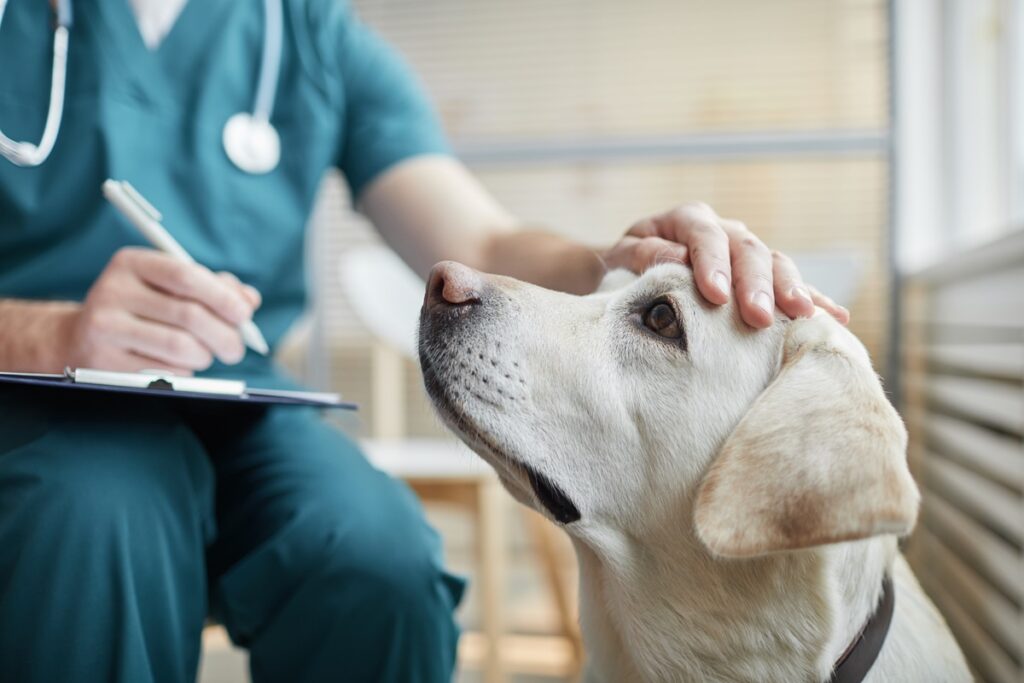Animal Chatter
by Iris Winston
All medical professionals carry massive responsibility that goes far beyond their clinical knowledge and technical skill. Communicating clearly with patients and their families and, even more, empathizing with them and calming their anxiety are key aspects of the quality of the medical care they receive.

For veterinarians, these qualities must reach even further. First, because their patients’ language is non-verbal, they must be adept at interpreting every twitch of a tail or widening of an eye. They need to become attuned to an animal’s view of the world, particularly, at that moment, the scary world of the examination room in a veterinary office. Add to this that vets treat various different types of animals presenting different body language signals and note that they have the double responsibility of caring for their animal patients and calming the emotional distress of their human companions (the clients).
Little wonder that some veterinarians, no matter how correctly they diagnose and treat their animal patients, are less successful in empathizing and communicating with clients.
This is precisely what happened to a friend of mine. Early one morning, she had taken her dog for a walk. The animal was less enthusiastic than usual, even though this was one of her places to run. On this occasion, she didn’t run at all. She just took a few steps, then lay down, unwilling to go any further.
Her behaviour was so far from her puppy-like delight at the chance to romp in the woods that my friend called her local vet as soon as she returned home and booked her dog in for the first possible appointment. Just before they headed to the clinic the next day, she tried a second walk. The response was the same. Now, my friend was really worried.

Apparently, the vet was unaware of just how upset she was. He didn’t offer any reassuring words either before or after examining the dog. Instead, after doing medical tests with little explanation, he diagnosed two conditions, one of them life-limiting. He prescribed expensive medication and called for further testing, also pricey. My now distraught friend left the office uneasy and anxious for more information.
Therefore, she decided to seek a second opinion, following another friend’s recommendation. The approach and attitude of the second vet were as different as night and day, said my friend. He discounted one initial diagnosis, although he did confirm the other, much more serious condition, following another test. However, he also offered hope, suggesting that as various reasons could cause the illness, it might be more manageable than originally suggested. He recommended a consultation with a veterinary specialist and, even more important, he prescribed a different medication that he said was key in treating the dog’s condition.
The pleasant ambience and sparkling cleanliness of the second clinic was also in sharp contrast to the first. The brusque first vet gave no indication of much interest in either the dog or her owner. The caring second vet was gentle with the dog, talking to her during the examination. He also explained possible treatment options, including recommendations on diet and exercise, in detail, as well as suggesting a further consultation with a specialist. My friend left his office with clear directions and hope that her dog would be with her for a few more years.
At this point, the dog is doing well. My friend, encouraged by her experience with her new empathetic vet and specialist, is working to give her beloved pet the best life she can have for as long as the treatment and prescribed medication and food will give her.
The approaches of these two vets underline the importance of a veterinarian being attuned to both the patient’s and the client’s perspective and being dedicated to their quality of life. The relationship between vet and client is key to ensuring that the patients have the best possible care and that relationship thrives on empathetic interaction.
Almonte, Ontario, writer Iris Winston is a former executive director of the Canadian Federation of Humane Societies. She has been an animal lover all her life. Her pets have always been important members of her family.






